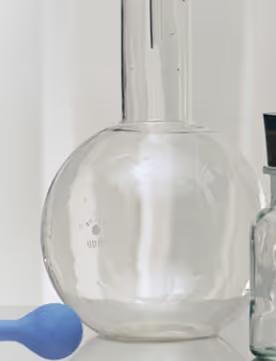Is that AIP diet you were advised to follow for your autoimmune disease causing you more angst than you imagined? You know diet plays a role in managing your symptoms, but you’re not sure how to navigate the AIP diet due to all the limitations? While it may feel overwhelming now, there are some easy ways to identify tricky foods so you can feel confident in the kitchen again.
The AIP diet was designed to lower inflammation and provide symptomatic relief from your autoimmune disease, but staying AIP compliant doesn’t have to take over your life. The AIP diet can be very useful in treating your autoimmunity, but first we have to get to the bottom of how to identify those tricky gray-area foods and where they fit in for you. Let’s look at some quick tips on how to identify tricky AIP foods, so you can reap the benefits of lowered inflammation sooner rather than later.
What Is the AIP Diet?
So what is the AIP diet? The Autoimmune Protocol diet, or AIP for short, is an anti-inflammatory diet intended to help you better manage and treat symptoms of autoimmunity and autoimmune disorders, by supporting a dysregulated immune system. The autoimmune protocol is a type of elimination diet. By eliminating problematic foods that disrupt digestion, irritate the gut lining, and trigger gut bacteria imbalance (known as dysbiosis), the diet seeks to promote gut healing and decrease systemic inflammation. (Source, Source)
The autoimmune protocol diet can be a good approach to treating your autoimmune disease, as well as preventing and treating chronic illness. The results you can expect to see from putting the AIP diet into action depend on your autoimmune diagnosis. You may be able to stop your disease from progressing for a period of time, or even put your disease into remission with this food-first approach. For some autoimmune sufferers, the AIP diet may be just what they need to manage their symptoms drug free.

How Does AIP Work?
Moving away from the ever inflammatory Standard American Diet (SAD) can help your gut begin to heal as trigger foods are eliminated and nutrient-dense foods are added in. The autoimmune protocol has gained momentum in the last decade as more people following it find their symptoms decrease, their energy improves, and they feel better overall. With the increase of macronutrients and micronutrients from consuming a wide variety of nutrient-dense foods regularly, the body has the opportunity to thrive.
The autoimmune protocol is broken down into 3 phases: elimination, reintroduction, and personalization (sometimes called maintenance). These 3 phases should be followed to discover and eliminate food intolerances to better manage your autoimmune disease.
The 3 Phases of the AIP Diet
The elimination phase is an approximately 6 week period of cutting out inflammatory foods and maintaining this pattern until symptoms are relieved. After successfully completing elimination, reintroduction is the slow process of bringing back some of those eliminated foods one at a time, while tracking the body’s response to each. Reintroduction is important for identifying tricky foods that may be contributing to your autoimmune symptoms. The third phase, personalization, is where you can comfortably stay long-term to manage your symptoms through a food-first approach. (Source)
Treating Autoimmunity With Diet Makes Sense
As the root causes of autoimmune disease become clearer, the need for a diet and lifestyle approach to treatment makes sense. Research shows that autoimmune disease is oftentimes rooted in trauma, leading to a weakened immune state that could result in autoimmune disease over time. Controlling inflammation through a mindful diet and lifestyle regime may be just what your body needs in order to treat your autoimmune disease appropriately. (Source)

Is It AIP Friendly?
When you start the AIP diet you may find some gray areas as far as which foods are acceptable and which are not. Some of the foods eliminated in AIP are also included as acceptable foods, so what’s going on here? As mentioned, there are 3 phases to the AIP diet, and that’s key to understanding what foods you should and should not consume. Many of the foods not allowed in the elimination phase of AIP are highly nutritious, and if you can tolerate them, can be added back into your diet later.
AIP Food Basics
The elimination phase of AIP removes foods, food additives, and medications that may cause inflammation, allergies, gut dysbiosis, and imbalanced gut bacteria while potentially triggering common food sensitivities. Here's a list of foods to eliminate in this first phase of the AIP diet:
- grains: rice, wheat, oats
- legumes: lentils, beans, peas, peanuts
- nightshades: eggplants, peppers, potatoes, tomatoes
- eggs
- dairy: any products derived from cow’s milk
- coffee: decaf and regular
- alcohol: all
- nuts and seeds: whole nuts, nut butters, seed oils, and spices derived from seeds
- refined, artificial, added sugars: white, brown, aspartame, stevia
- refined and seed oils: all processed oils including canola/rapeseed, corn, cottonseed, peanut, grapeseed, rice bran, safflower, sunflower, soy
- food additives: emulsifiers, thickeners, stabilizers such as guar gum, xanthan gum, carrageenan, lecithin
By removing these triggers for a time, your gut bacteria should improve and your inflammation decrease, as your gut lining heals and repairs itself through high quality nutrition. (Source)
Foods To Include on AIP
To offset systemic inflammation, the AIP diet focuses on nourishing and healing the gut and balancing gut bacteria with nutrient dense foods such as:
- vegetables: all except nightshades
- fruits: fresh or frozen; low glycemic are best
- high quality animal and seafood proteins: grass-fed beef, poultry, seafood low in toxins
- fermented foods and beverages
- high quality vegetable oils: extra virgin olive oil, coconut oil, avocado oil
- herbal teas
- nuts and seeds
You may have noticed nuts and seeds are on both lists, or may be wondering if nuts can be added back in during personalization. The answer is yes and no: How the reintroduction phase goes will determine if you can tolerate nuts and seeds regularly, or even just once in a while. This holds true for a lot of tricky foods in AIP.

4 Tricky Foods
Within AIP diet guidelines, there are overlapping foods that are deemed not acceptable to consume when you first start, but then okay to have later on. This is because of the diet’s 3 phases: elimination, reintroduction, and personalization.
Inflammatory foods that irritate the gut lining and trigger an immune response are removed during the elimination phase. The reintroduction phase slowly adds some of these foods back into the diet as you keep track of how your body responds to them. The personalization phase is your very own version of the paleo diet, a less strict version of AIP.
Each of us is on a unique journey when we decide to utilize the AIP diet to control our autoimmune disease, and these tricky foods show us just how unique we all are.

.avif)
%20(1).avif)
%20(1).avif)

.avif)











.avif)

%2520(1).avif)


